The fate of most cars to have ever been made in the UK is a glum but inevitable one. From the jubilant day the owner drives it out of the showroom, the British car is on a hiding to nothing. The first wheel rim scuff and car park dent take the shine off; in a few short years it will begin its life as secondhand goods. More owners down the line and it’ll eventually struggle to pass its MoT for minor misdemeanours, and soon it’s a short distance between major organ failure and the scrapyard where the crusher’s jaws close in remorselessly as the metal shrieks its goodbyes.
No wonder the handful of fluky machines that escape this cubic ending are accorded classic status. They more than deserve to be celebrated.

So you might not be surprised to learn that, by the estimation of Britain’s leading specialist and valiant advocate, “about 95%” of all our nation’s classic milk floats have gone the same way. But the reasons are very different. It’s not a consumers-use-them-up-and-wear-them out thing. You can directly blame politicians.
Because the glass bottles of milk that used to clink on to your doorstep in the grey light of dawn in the 1970s didn’t do so because your mum and dad organised it that way. The tortuous route from udder to Weetabix-softener was a tightly controlled process that ensured your local dairy looked after the final few miles. Only in the 1990s was the industry systematically deregulated. Tetrapak and the big supermarkets were finally allowed in, and milk rapidly became just part of the weekly shop with no special status as something that could only be brought to you by people in white peaked caps on an electric three-wheeled truck. In one year alone during these grim times for farmers and bottlers, orders for milk floats at leading manufacturer Wales & Edwards collapsed by 70%.
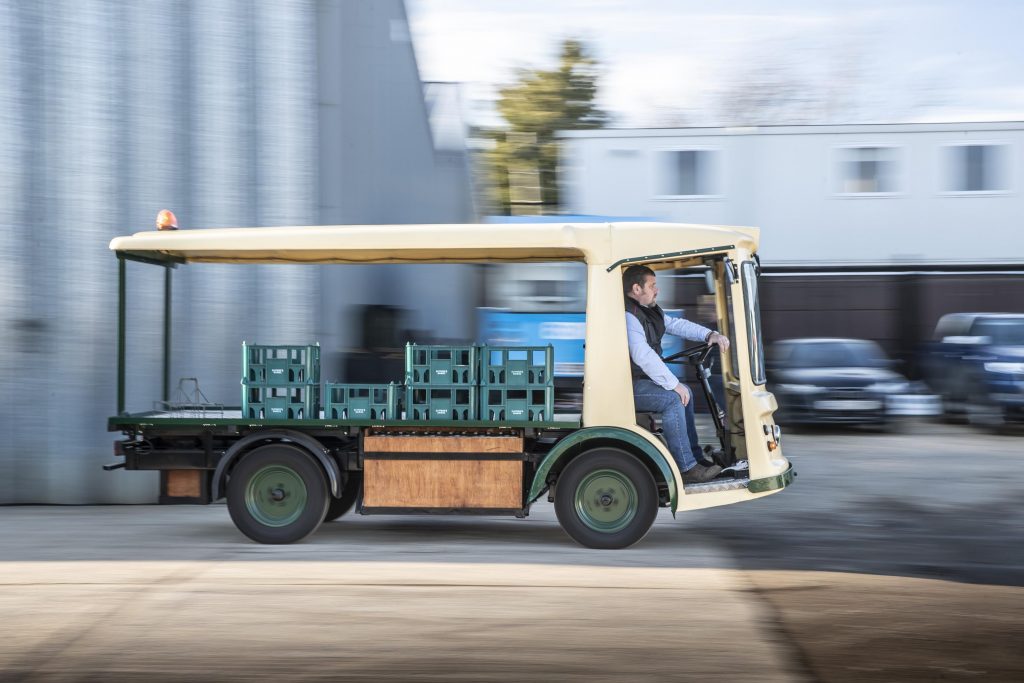
We might all be excited by electric vehicles today but back then they were anything but gold top. Up and down the country these whirring workhorses were carted off to the knacker’s yard for scrappage. Most of them had decades of usable life in them still yet they were guilty, as charged, of being past their drive-by date. Once on the turn, they were tipped away.
But I don’t need to keep thinking of milk-based puns because a), you’ve had the cream of them already and b) I’ve just met Geoff Hall and can report that the few original survivors have became a precious commodity, a green stimulant to independent businesses and community cohesion, and a fascinating route to the green roadscape many of us crave.
Geoff is a big man with a big love for big cars; American cars, that is, such as the 1959 Chevrolet El Camino that sits aloft on the hydraulic ramp in his workshop. He has lots of other passions, too, including the Smart Roadster in which this West Sussex classic car dealer specialises, and pristine examples of cars you don’t see much any more, like the Austin Metro and Ford Corsair. Some of these are helping to block the Chevy in but mostly it is crowded by old milk floats of every conceivable size and age.
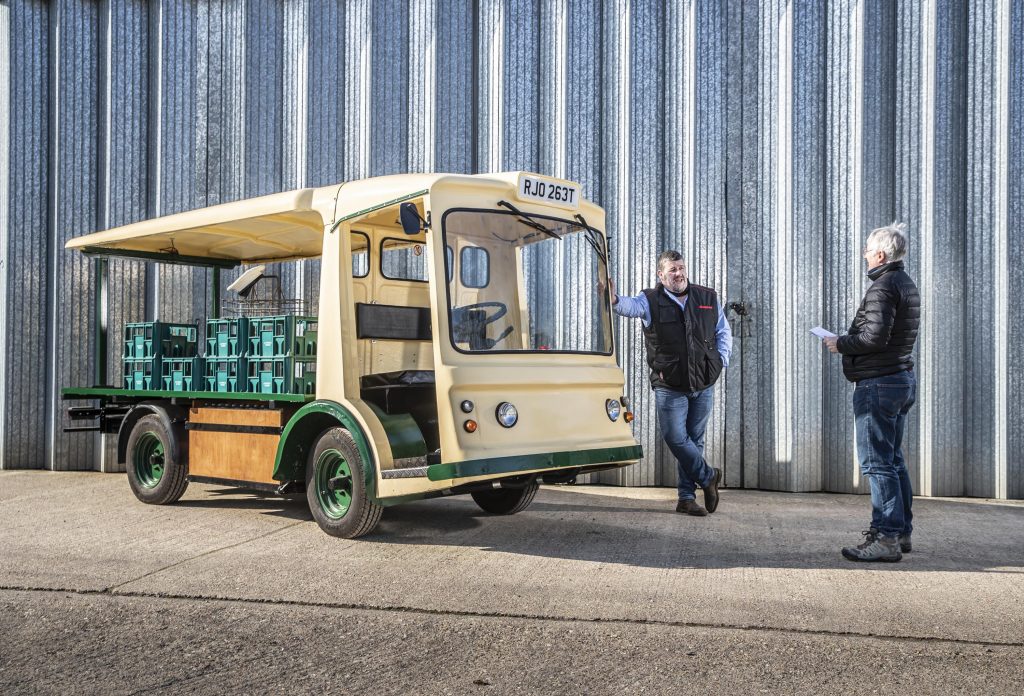
I am like Geoff, in that when I see these utilitarian vehicles close-up I am carried by a comfort blanket of nostalgia that wafts me back to a time when the world made logical sense – milk floats, being electric, made almost no sound on the move and therefore didn’t wake people up in the early hours – and other people looked after the difficult stuff in life. But he has a personal reason to look back with fondness.
“I actually did a milk round when I was a kid,” he remembers. “Our milkman was known as Dirty Dick for some reason, but he was all right. My parents knew him and got him to let me help out on a Sunday morning. He’d drive and I’d be jumping on and off the float – it was a Smith Cabac – with six pints under my arm to leave it on people’s doorsteps.”
Many years later, after a career in property and after he’d moved into old cars, Geoff suddenly got the urge to find a milk float for his own amusement. Before he could even stop himself, and as you do, he’d bought one online and the ex-Unigate Dairies Guildford Wales & Edwards three-wheeler was delivered to what he lovingly refers to as his “car orphanage.”
It was not, perhaps, the best of impulse buys.
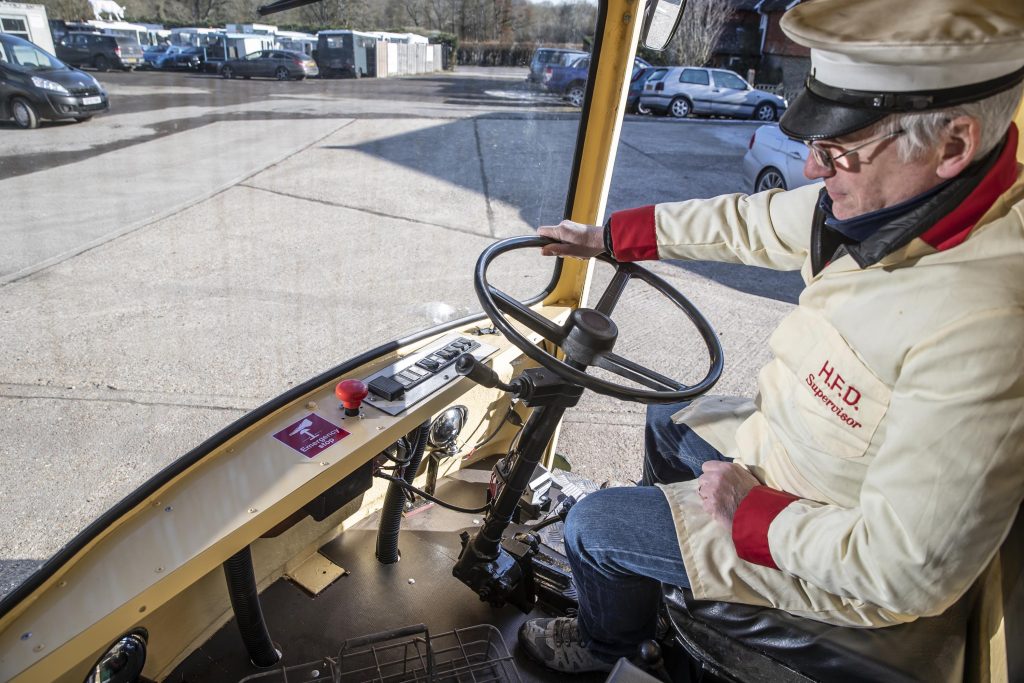
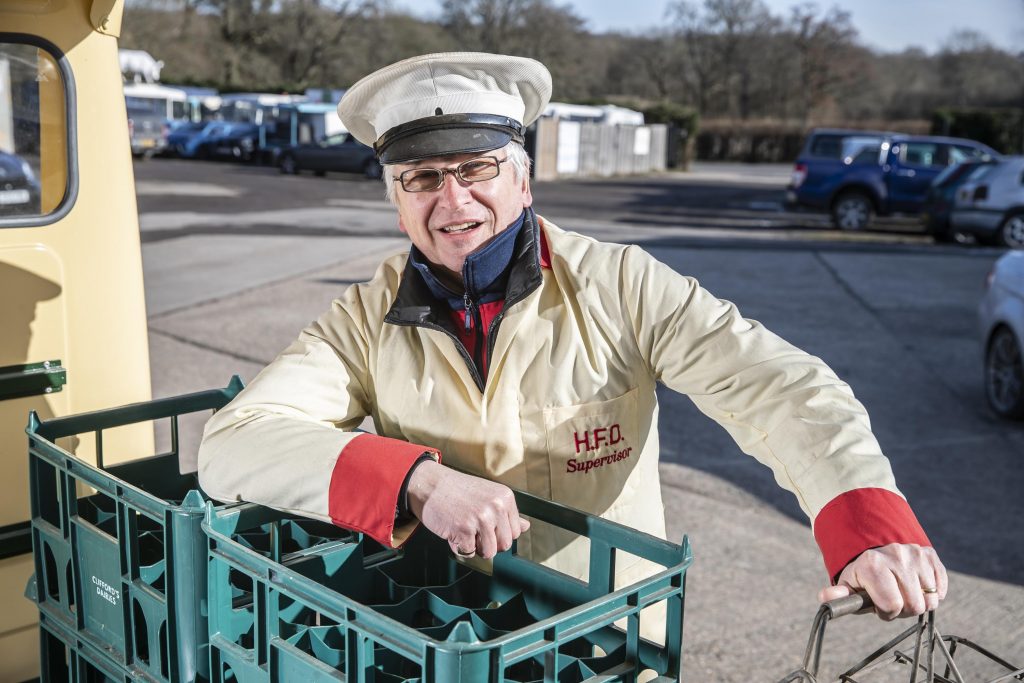
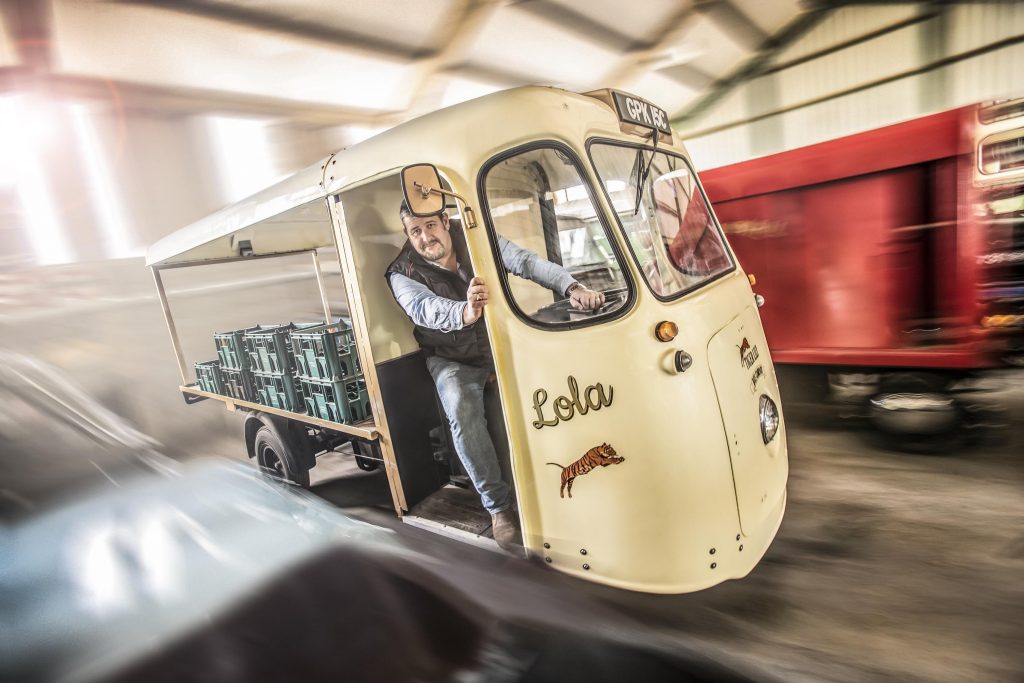
“I thought, well, what’s the worst that can happen? Er, anyway, the batteries would only give charge for about five minutes, and when I showed it to my friend Len, who’s maintained them since he was a teenager and was going to restore it, he said the whole thing was only good to go into a skip. But by now I was really into them. The bug had bitten.”
That was four years ago. Geoff has spent the intervening period acquiring any float he can get his hands on, making them presentable and functional again, and then either hiring them out for everything from novelty funerals to stealthy runabouts on film sets, and selling them for anywhere from £10,000 to £25,000 for rare models in concours condition, when we looked at the stock available.
They’re all rare but with Geoff’s encouragement they continue to come out of the woodwork. He has a large and varied pound full of examples bearing the names of milk float manufacturer royalty that will mean nothing to most of us car fanatics below a certain age – Electricar, Smiths, Harbilt, Sidney Holes, Henry Bugden. The aforementioned Wales & Edwards is the classic three-wheeler, which in the red and white livery of United Dairies is the one you’ll see in old British movies. Another awesome-to-know fact is that aerospace firm Hawker Siddeley of Harrier Jump Jet fame also owned the down-to-earth Morrison-Electricar company, one of Britain’s biggest milk float builders. It made the four-wheeled classic with the raked-back frontage and doors that slid inwards in front of the windscreen for deliveries on narrow streets; not pretty, but perfect for the task in hand.
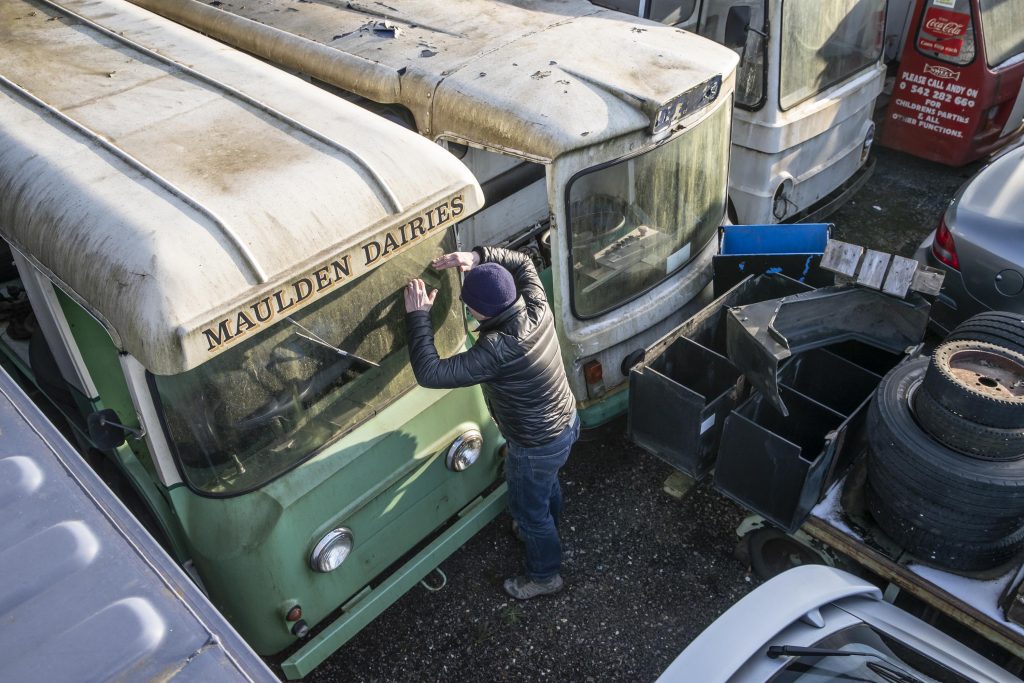
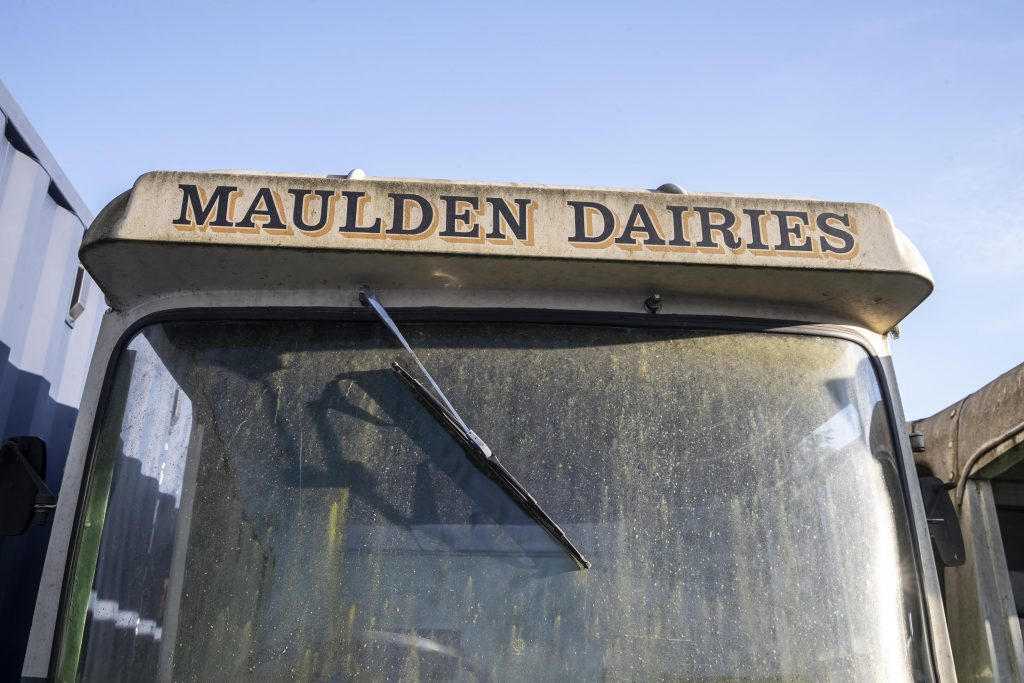
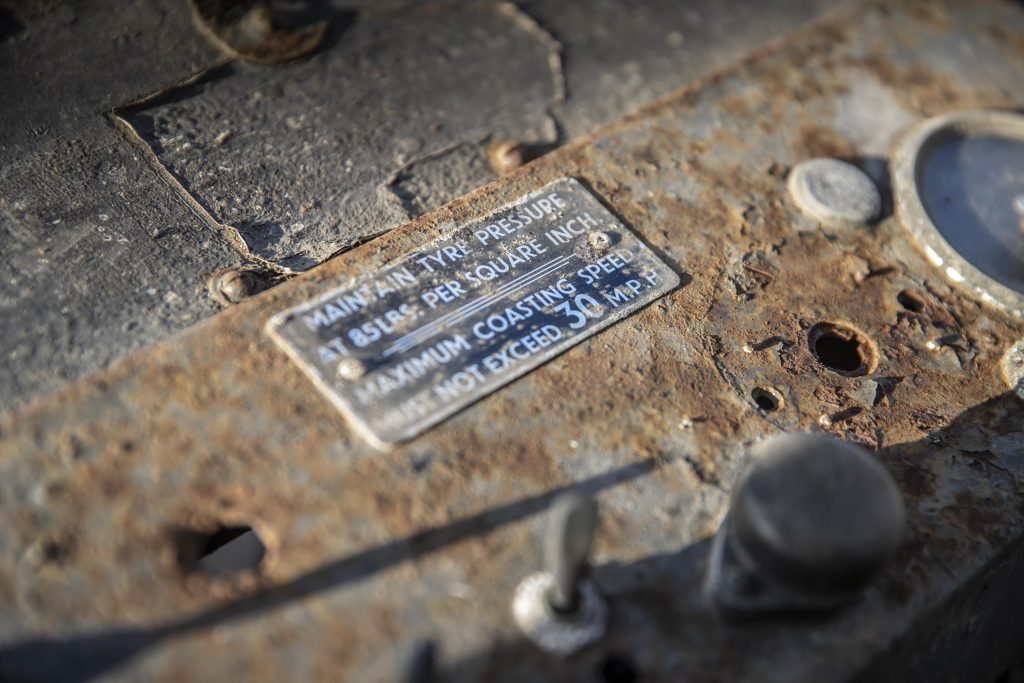
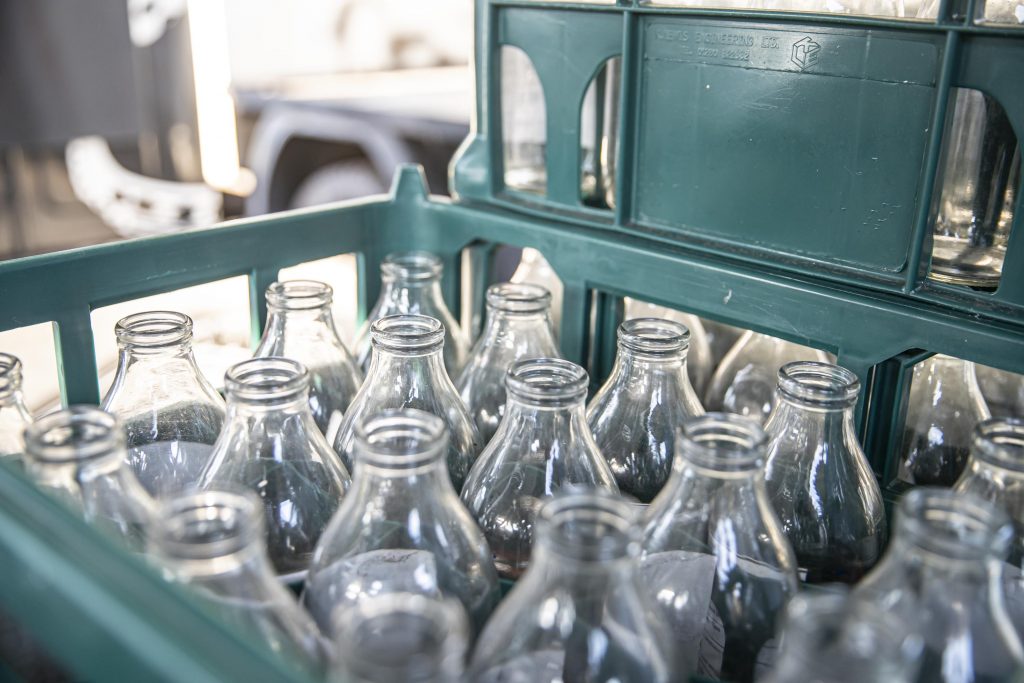
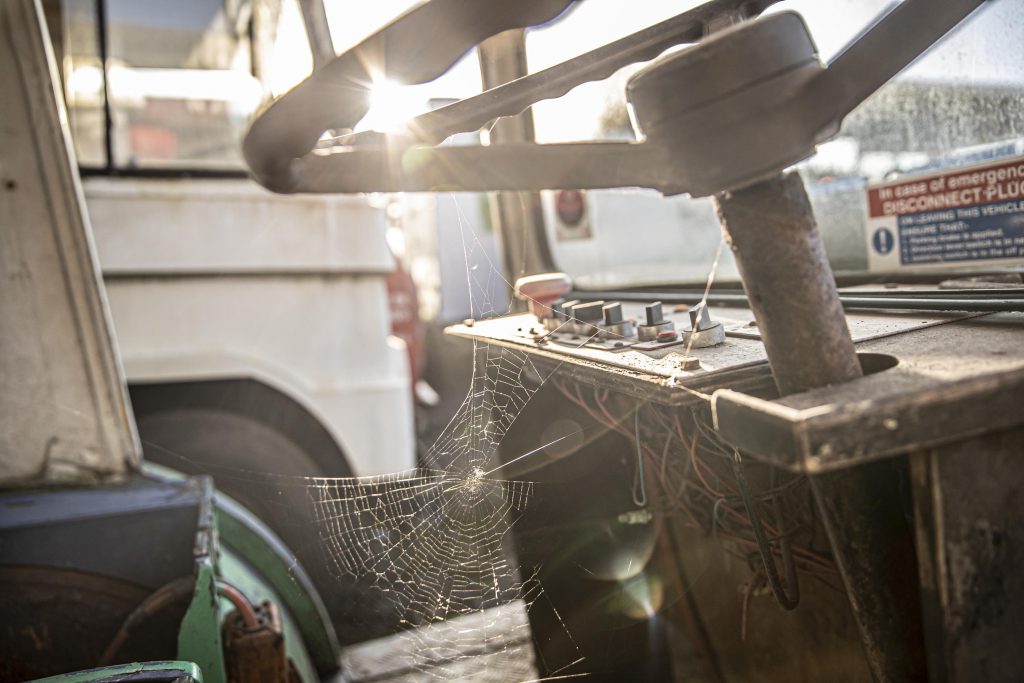
Much as they summon up the recent past, Geoff thinks repurposed floats are tailor-made for a future where environmental responsibility, locally-based communities and start-up enterprises come together.
“It’s my rant: get floats out there again! Get drivers to deliver local produce and community spirit on them, and wrap small businesses together. The local high street is dying and Amazon deliveries make a huge carbon footprint, so these are the answer. The old milkman was an integral part of the community, and these will re-establish delivery drivers in that role. They can be time-shared to work for butchers, bakers and florists, driving along specific routes once or twice a week and keeping older people in contact with local businesses. They can put some life back into local communities.”
So far, though, the actual take-up has been a little different, although no less varied. Food vans and mobile coffee stalls have adopted them, and Geoff has supplied 10 examples to the progressively green-minded management of Bristol Waste, which uses them around the rapidly electrifying West Country city for street-cleaning duties.
“Of course, they are perfect for that – they might as well have been built for it, and it works for everyone. They are recharged in the depot at night and can cover 40-45 miles each day. I know councils all have different attitudes these days but these are definitely the way to go.”
Old-school electric propulsion has its limitations. Modern electric cars and vans, and all on-street charge-points, are based on alternating-current (AC) electricity, Milk floats use direct-current (DC), better suited to many dozens of stop-starts each chilly morning. Plug a DC Smiths Cabac into an AC socket and the result will likely be a violent explosion. DC is more efficient but AC more powerful.
This incompatibility has been taxing Geoff and his circle of helpers. He’s calculated that if the traditional and hugely heavy lead-acid battery cluster needed for DC is replaced by a lithium-ion equivalent pack ideal with AC then any milk float can, in effect, be turbocharged. He’s working on a prototype, and a couple of multinationals are showing keen interest in the conversion, and lending support with the technology swap.
“You take 1000kg of lead-acid and replace it with 350kg of lithium-ion. That means you can charge it anywhere and the 700kg weight loss allows the payload to increase, so the vehicle can be used for more things. It would also increase the range from 50 to 80 miles. It’s the next step and it’s totally feasible.”
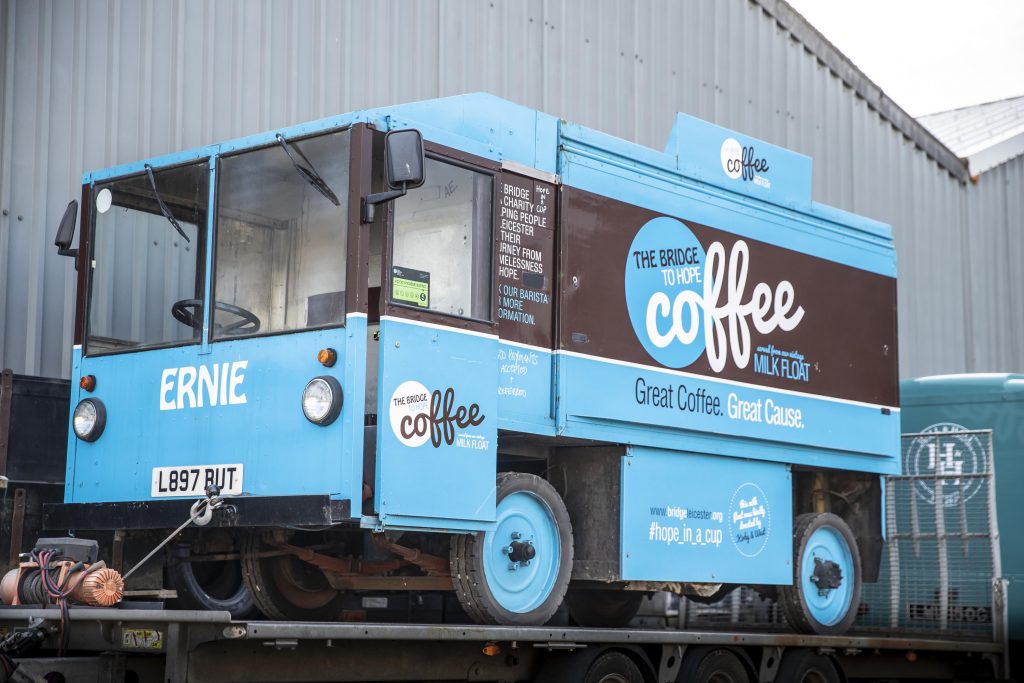
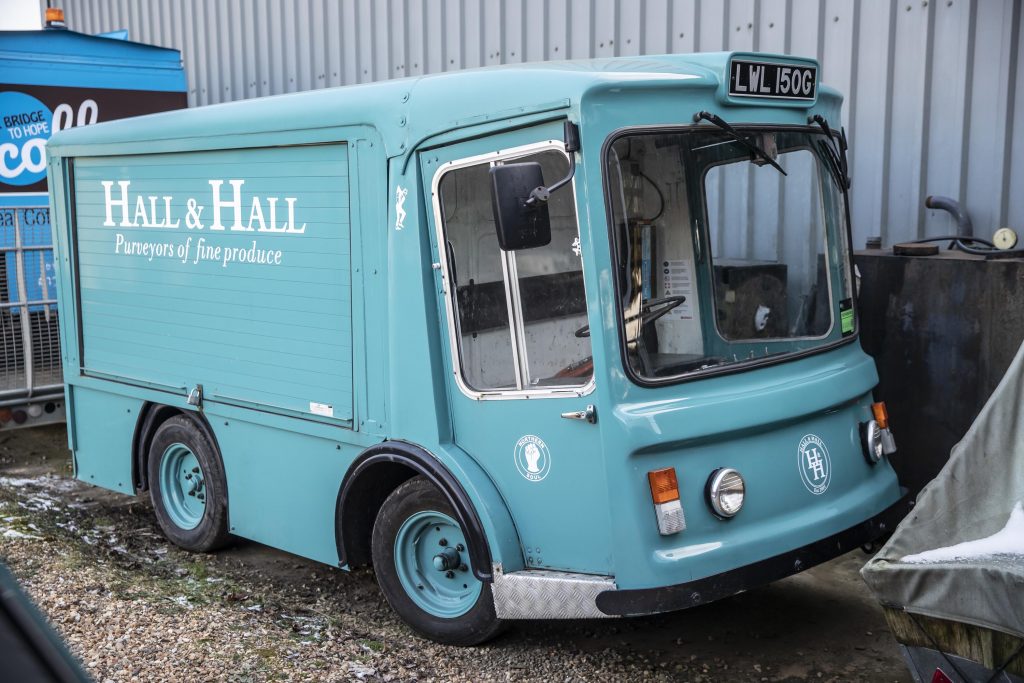
Geoff also recently supervised the making of a new cab for one of his floats, edging him slightly further into actually producing the vehicles as well as championing them. They tend to be, drivetrain apart, honest and robust structures with nothing fancy; Gordon Murray would surely approve of their built-for-purpose engineering even though he might be shocked at the exposed wiring, mean bench seats and wavy fibreglass. The prominent stickers everywhere cautioning ‘Warning!’, ‘Important!’ and ‘Look!” point to a working environment where the operative just wants to get the job done as fast as possible.
You may, indeed, one day even look back on this article and realise Geoff must be thanked for putting milk floats back where they belong.
A couple of his prime Cabacs (so-called because the cab is snugly enclosed with a sliding door at the back, rather than the open-sided models that demand the milkman dons his Damarts even in late spring) have recently gone back into service with Billingshurst Dairies, a start-up that’s revived daily deliveries of locally produced milk, butter, eggs, bread, cheese and cream. It’s been a rip-roaring success, and even uses proper glass milk bottles. So although you‘re unlikely to hear the Billingshurst milkmen turn up on their floats, that reassuring clink is back…
Read more
Evel Empire: Knievel’s stranglehold on the Seventies
The likely lads in a lock-up who made it to the F1 grid
A beginner’s guide to road rallying
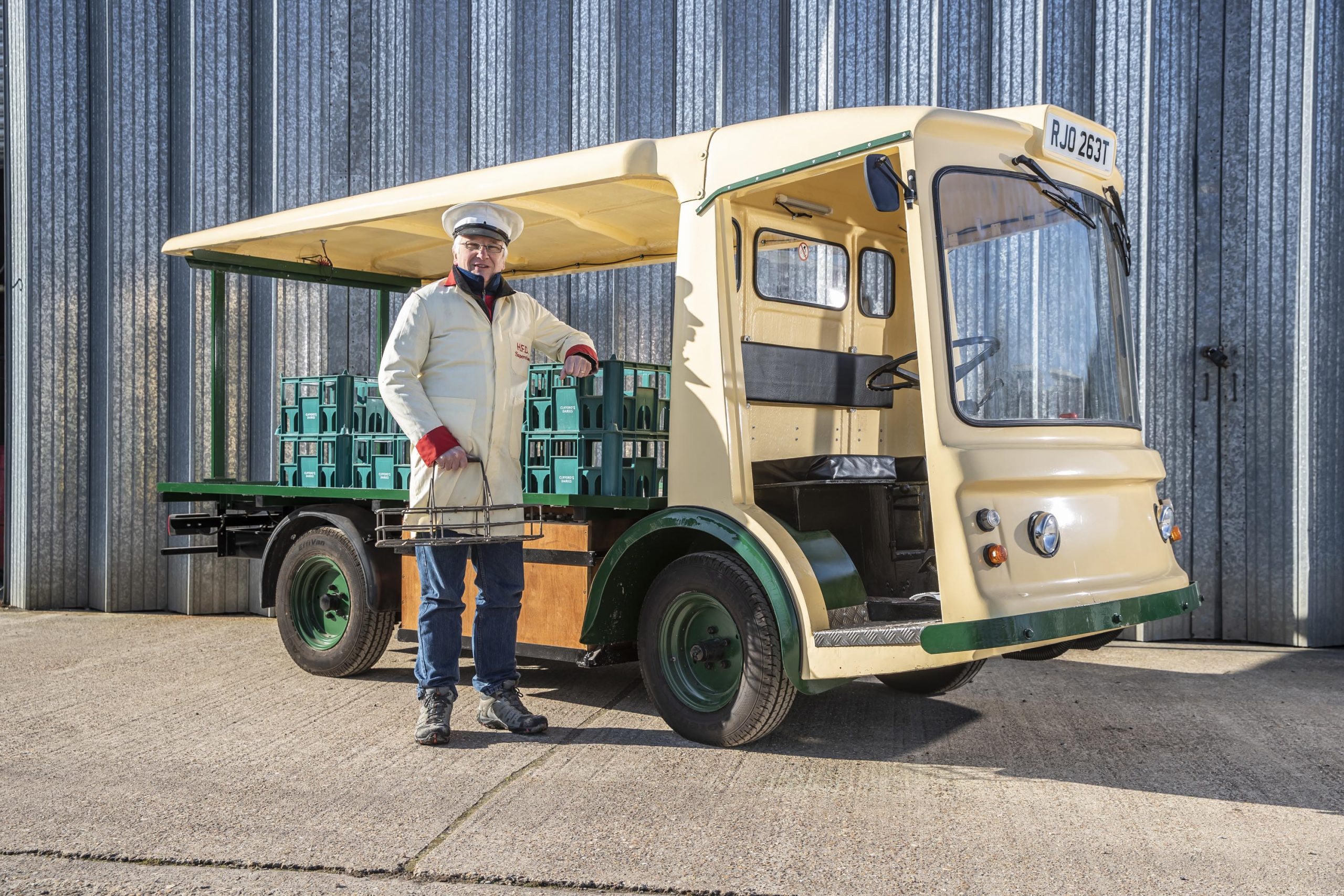

















Reading this reminds me of the whine of their motor as they got moving and the whiff of stale milk if you ever walked too close past one!
There was a milk float in Leeds entitled ‘Dan’s Dairies’. Still makes me smile…
Oh well, looks like I’ve missed the boat on any chance of cheaply re-creating the Father Ted ‘Speed’ parody …
That Hall & Hall float looks amazing, BTW.
Glenburn dairy Troon had in the 70-80s had three smith’s cabac’s one Wales @ Ewards three wheeler one Morrison’s they were great in the morning the frost cut their distance
We still have milk delivered in glass bottles. Yes it costs more but it has been a boon in these Covid times and supports local business.
When I was a lad, I used to go on the rounds with my Dad in a milk float just like the one in the main picture at the start of the article. The sound of the motor, the smell of stale milk (as Mark said above) and clinking bottles are all memories of some great times. They were damn cold though, the wind whistled through the cab. We even wore fingerless gloves and this was the late 60’s! The dairy he worked for had loads of these floats and I always used to marvel at them all neatly lined up being charged up at the end of the day as if they were in their own parlor and think about how much it must cost to charge all those milk floats.
I still have my milk delivered in bottles, and by electric milk floats!!! My local dairy (Planks Dairy) has continued to use these floats……the owner has a yard full of them, he had to cannibalise them to keep the others going over the years but he’s determined to keep them in use as long as he can!
Fascinating and very informative article on an unusual topic. Great read.
Handsworth Dairies delivered to our house, but Midland Counties delivered to my best mate’s house 5 doors up the road. When the Midland Counties milkman finished his round at the end of the road, we used to cadge a lift on the float downhill to the beginning of the road. Unencumbered by a full load of milk, the performance was exhilarating!
I have a BMC j4 milk float I want to sell
Did you manage to sell it?
Hi im looking for a 70s 80s north Ayrshire milk float
When I was a veterinary student in the 1960s the Cambridge University farm had a couple of superannuated Job’s Better Milk floats which were used to convey hay, straw and other feedstuffs around the farm. Much cheaper to run than a tractor.
Have 1980 milk float is there a Used market for it